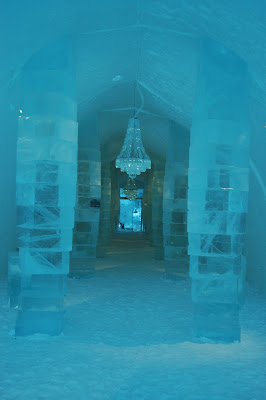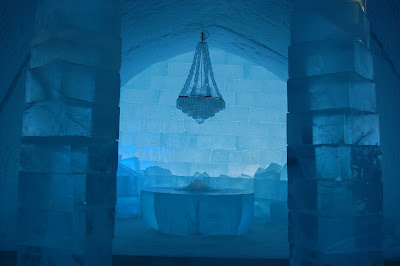 Everything was blue, as if I just wiped out in some gigantic surf and was held under for too long. I didn’t know if anybody else could hear me, but I convinced myself to let the others walk a little ahead in case. The huge vaulted ceiling matched my open maw. My mind flew somewhere else for a moment. I was in wood-trimmed room with books on the walls and a four horse feet sticking up from behind a couch.
Everything was blue, as if I just wiped out in some gigantic surf and was held under for too long. I didn’t know if anybody else could hear me, but I convinced myself to let the others walk a little ahead in case. The huge vaulted ceiling matched my open maw. My mind flew somewhere else for a moment. I was in wood-trimmed room with books on the walls and a four horse feet sticking up from behind a couch.“Holy shit!”
“There were blanks in that gun! I didn’t even point the gun at him!”
“Holy shit!”
“Maybe he had a heart attack.”
“Holy shit!”
I was back and just met the raised eyebrows of two large framed girls in parkas and Suomi shawls with nametags. They were probably wondering why I was chanting “holy shit” like a deranged monk. I stopped saying it, but I couldn’t stop thinking it. I was in the mother-of-all igloos and was standing between columns made from clear blocks of ice that were each rotated a few degrees so the column looked like a spiral. The others had walked half the length of the room and were standing under a clear chandelier of thinly cut chunks of ice. It didn’t give any light of its own but reflected a thousand shades of blue from a tiny hole above it. Holy shit.
Some things are just plain cool, Samuel L. Jackson cool. One of those things lies about a forty minute bus ride outside of Kiruna in Jukkasjärvi. Built on top of the now frozen Torne River is the Icehotel. And, as its name suggests, it is a hotel made entirely from ice. I had added a visit to this hotel to the list-of-things-to-do-before-I-die a few years back, not coincidentally around the time Die another Day was released, right between “ride a dogsled” (check) and “see the northern lights” (no dice so far).
Originally, the hotel was just part of some Nordic art. I’m guessing there’s not a lot to do in Jukkasjärvi during the long, dark winter other than build things out of ice and snow—so in 1990, the site was chosen because of the clarity of the ice blocks that can be harvested and later turned into sculptures. As the legend goes, some idiot tourists hadn’t made proper plans (This is a literary device known as foreshadowing.) and hadn’t a place to stay the night. They asked the kind, artistic types if they could sleep in their igloo. The nineteenth version of the Icehotel is now both a shelter and quite a legitimate piece of ice-art. Mid-November, four to five thousand metric tons of ice are carefully carved out of the river. It takes 50 artists and an industry of laborers a month to finish the 6000 square meter wonder. But like its miniature cousins in the driveways and front-yards of temperate climate suburbia, the Icehotel is doomed to melt in the spring.
Inside, it was far from melting. The temperature sat just a few degrees above freezing. Coming in from the windswept, frozen river where it was about -15C (+5F), it felt quite fine, actually. Six wings junctioned into the main hall where we were now sliding across the ice benches and slipping across the table under the chandelier, three on each side. There are several rooms that were fairly barren except for the beds and a table or chair. Each was lit from underneath the various and sometimes random pieces of furniture by an orange or dull green light. Some rooms contained as many as six beds. One of the six halls was dedicated to a “deluxe art-suite” and had a sliding door with keycard access rather than the meager curtain. Three of the halls were set aside for “art rooms.” Each room was completely unique and was the design of a single mind.
The first one I walked into was filled with crystals that were anywhere from tiny to chest high. They surrounded the double bed and even came from the ceiling. “Like the home of Superman, no?” said one of the French girls with whom we went on the dogsled trip. I excitedly went to the room across from us, not wanting to wait for the myriad of pictures that Nico likes to take. The next was set up like a labyrinth, barely big enough for me to get through with square shoulders. Then the light was gone. It was just me and my heartbeat for a while. I prepared myself to battle the Minotaur. I slid my bare hand along the smooth walls until I made it back into the hallway. When I finally came out, a thickly accented voice was asking her husband, “Why would the put a switch here, with no light?” I waited next to the doorway in the hall for Jörn and the girls to get bored posing for photos and move to the next room. The couple from earlier had been in the maze long enough to make it about half way. “What’s in that room?” I drew the curtain as Jörn approached. “I think it’s closed,” I said as ushered him down the hall. I hit the light switch as we walked past it, “it’s all dark inside.”
Each room was seemed to get more and more spectacular. I was absolutely sure that this one was my favorite though. It had backlit pipes and faucets made from ice that led to a crystalline conveyor belt, complete with gears and rollers. The next room was even better. “No, this one is my favorite.” It was subdivided by an archway, under which was the bed. The left side was done in smooth snow-like finish the right was clear and slick ice, made to look like tiles but with cascades of still water, flowing from roof to floor.
The next room was a tree trunk. We climbed around it, some of the massive boughs as stairs and in the top was a double bed. I plopped down and stared at the ceiling. The others were coming up the tree now. “Uh, Zack, this one is your favorite, right?” I admitted so with a smile and everyone laughed. I counted five. “You can have more than one favorite, you know.”
With the rooms toured and well photographed it was time to hit the bar. I was first up the passageway, as I was almost all day, being too excited to wait for the Latin/Gallic pace. I had been waiting for this moment for a long time. There was a short girl with black hair behind the bar and an enormous fur cap, “Varsågod?” I resisted the temptation to order a Vodka Martini, S.N.S. and asked for something she felt like making. I was lucky because I was treated to mango-fruit-something-something infused Vodka that Absolute had shipped to the Icebar recently and was available nowhere else (or so the legend goes). Mixed with several colored juices and brandies, the potion was poured into an ice glass. I waited for the others to get the same thing and we clanked our ice-blocks. "Skål!"










A question I have had about the Icehotel is, "How can you sleep on a block of ice?" Well, the memory-foam mattress that are advertised to TV, you know, the Swedish Sleep System--those help alot. On top of that, there are reindeer furs and a sleeping bag. It's probably the most comfortable bed I've ever not slept on.












































